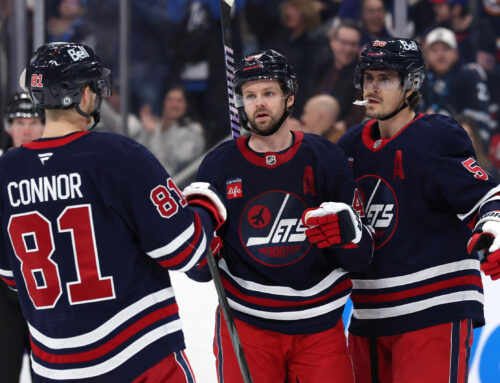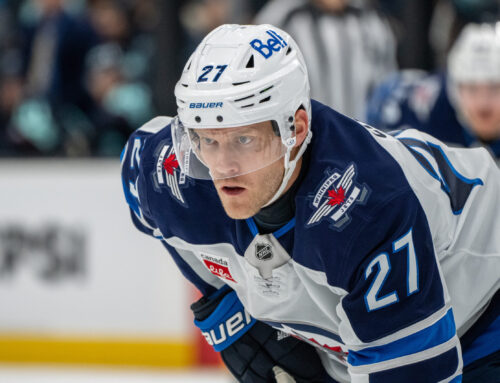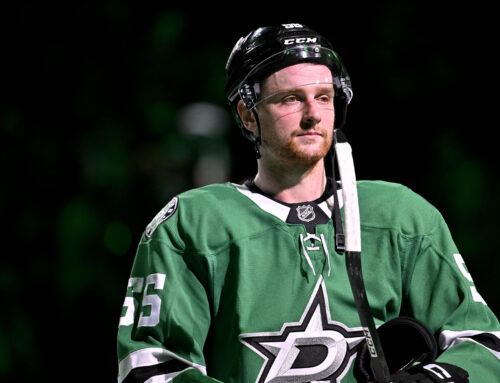
Let's revisit the end of the 2004 campaign, which was the year before the lock-out. The Blackhawks, Capitals, and Penguins finished the year ranked 28th, 29th and 30th respectively. The Blue Jackets finished 27th followed by the Coyotes at 26th, so to make things a bit easier let's just say they were essentially in the same boat four seasons ago. Following that campaign and a few subsequent years, the Capitals revamped with Alex Ovechkin and Niklas Backstrom. The Penguins revamped with Evgeni Malkin, Sidney Crosby, and Jordan Staal. The Blackhawks followed a similar path and picked up a few studs in Cam Barker, Jonathan Toews and Patrick Kane. The Blue Jackets added Derrick Brassard and Jakub Voracek, while the Coyotes haven't been too bad as they followed suit by drafting a few doozies in Kyle Turris, Mikkel Boedker, and Peter Mueller. So the main question on my mind is – why has Washington, Chicago, Pittsburgh and Columbus essentially improved themselves into Stanley Cup contending/winning franchises, while Phoenix is still floundering?
More importantly, why have the stars on the other teams become such huge fantasy studs, while the young pups in Phoenix are still struggling to register a blip on the fantasy radar?
My initial thoughts were that maybe it could be related to the head coaching position. Washington went through Glen Hanlon before changing to Bruce Boudreau. The Penguins went through Michel Therrien before changing direction with Dan Bylsma. Chicago went through Denis Savard before leaning on Joel Quenneville on their post-season run this past year, while the Blue Jackets went through the same with Gerald Gallant to a more defensive-minded Ken Hitchcock. Only the Coyotes have kept one head coach since 2005. Could this be one of the reasons why the Coyotes are still struggling, while the others are flourishing?
Let’s delve a little deeper because there has to be more to it than a simple head coaching change. We’ll compare the ice-time of all of the star players mentioned above in their first four years in the NHL.
Washington
|
Name |
Rookie |
Sophomore |
Third Year |
Fourth Year |
|
Ovechkin |
21:37 |
21:18 |
23:07 |
22:59 |
|
Backstrom |
19:00 |
19:57 |
|
|
Pittsburgh
|
Name |
Rookie |
Sophomore |
Third Year |
Fourth Year |
|
Crosby |
20:08 |
20:46 |
20:51 |
21:57 |
|
Malkin |
19:10 |
21:19 |
22:31 |
|
|
Staal |
14:56 |
18:16 |
19:51 |
|
Chicago
|
Name |
Rookie |
Sophomore |
Third Year |
Fourth Year |
|
Toews |
18:40 |
18:38 |
|
|
|
Kane |
18:22 |
18:39 |
|
|
|
Barker |
11:02 |
19:19
📢 advertisement:
|
17:12 |
18:21 |
Columbus
|
Name |
Rookie |
Sophomore |
Third Year |
Fourth Year |
|
Brassard |
9:03 |
14:25 |
|
|
|
Voracek |
12:40 |
|
|
|
|
Filatov |
8:08 |
|
|
|
|
Nash |
13:57 |
17:38 |
18:16 |
19:12 |
Phoenix
|
Name |
Rookie |
Sophomore |
Third Year |
Fourth Year |
|
Mueller |
17:16 |
16:05 |
|
|
|
Turris |
12:55 |
|
|
|
|
Boedker |
15:32 |
|
|
|
Pretty much all of the teams mentioned above, with the exception of the Coyotes and Blue Jackets, played the s#!t out of their young kids when they deemed them to be ready for the NHL. All of those star players essentially were given over 18 minutes of ice-time per game, and more importantly more offensive responsibilities on their respective clubs. They were allowed to flourish, and when they did so did their team. Phoenix bucked the trend by not only reducing the ice-time of their young budding stars, but added more "veteran" players to take vital developmental ice-time away from the youngsters. Could this be another reason why they're floundering and the rest are flourishing?
If you look at a team from a statistical point of view, they basically have roughly 300 minutes of ice-time to divvy up, minus a few minutes for penalties, amongst themselves. If you want to break down the Coyotes' situation a bit further, it might look something like this. Chalk up 22 minutes for both Ed Jovanovski, and Zbynek Michalek, 18 minutes for both Adrian Aucoin and Jim Vandermeer, 16 minutes for Keith Yandle, 20 minutes for both Shane Doan and Matthew Lombardi, and 17 minutes each for Scottie Upshall and Radim Vrbata. That's 130 minutes (give or take) left to divvy up between Mueller, Turris, Boedker, Viktor Tikhonov, Petr Prucha Martin Hanzal, Vernon Fiddler, Lauri Korpikoski, and one last blue-liner. You don't need a math genius to tell you that someone's going to get shafted in Phoenix. I'm not saying the players above don't have untapped potential, but the environment in which these players play in isn't conducive to allowing them to flourish.
A lot of people have been asking on the forums and the comments section – what's Mueller's point projection for this year? Or another popular one that I've read is: Was last season just a sophomore slump or is that what we can expect from Mueller from now on? I've read a few very optimistic opinions that mention he's due for a big rebound this year, but I just want to give you a heads up warning ahead of time. Kane picked up 70 points last season, while averaging 18:37 in overall ice-time and 4:10 on the power-play each contest. Mueller averaged 16:05 per contest on the season, but dropped down to 13:17 in March, when the Coyotes acquired Lombardi, Upshall, and Prucha. Throw in Fiddler, Vrbata and Korpikoski, and now ask yourself honestly will Mueller get enough ice-time to really have 80 point potential in him if he keeps status quo this season? I'm not saying it's going to be impossible, but he's going to need a few lucky bounces to go his way in order to achieve that feat. Dobber has him ranked as a 30th right wing and 43rd ranked center in the pre-season draft list, which is probably right around where he should be, so my suggestion is don't overpay for his hype.
I completely agree with Dobber in Sunday’s article regarding, "Peter Mueller, Kyle Turris, Mikkel Boedker, Martin Hanzal, Viktor Tikhonov, Keith Yandle – All six youngsters have similar experience and have loads of untapped potential." But the only way that they're going to reach that potential is if those kids get the vital development time plus the added offensive responsibility for them to flourish. If they continue to be forced to play second fiddle to newcomers, they'll never reach the plateau that all of us fantasy pundits expect them to reach. If Chicago, Pittsburgh, Washington and Columbus have all proven that the rebuilding formula works, why not follow suit and see what happens, it's certainly not going to be any worst than their current situation.
Questions or comments? Like always I'll be ready and willing to discuss them in the comments section below.





 TOR
TOR S.J
S.J ANA
ANA EDM
EDM CAR
CAR DET
DET CGY
CGY VAN
VAN MIN
MIN
